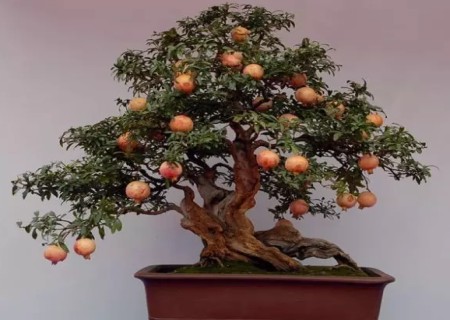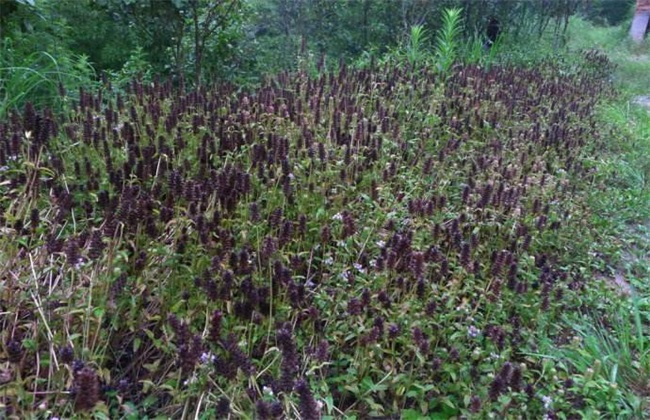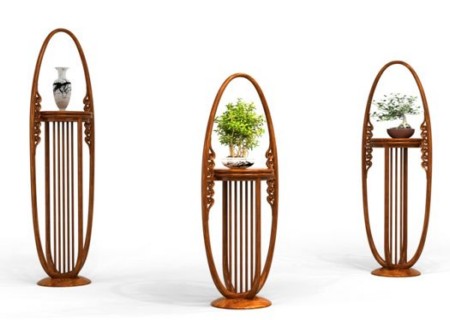Bonsai pomegranate trees bear fruit in several years
Everyone has a destined bonsai, and then the ordinary individual has a dream of poetic life in the bottom of his heart. Poetic life starts with bonsai! Pomegranate bonsai with wonderful beautiful tree shape, accompanied by green leaves, has gone through a long period of beautiful flowers. Red lanterns full of trees symbolizing happiness and reunion were sent to us, which made people salivating to thank Boya bonsai for its good works, which were pleasing to the eye.
Zhang Hua of Jin Dynasty ∶ Han Zhang Qian went to the Western regions and got the pomegranate seed of Tulin'an Shiguo, so it was named an pomegranate. Also press ∶ "Qi Min Yao Shu" cloud ∶ all those who plant pomegranate must settle the stiff stone and withered bones under the root, that is, the flowers are luxuriant. Then Anshi may take this in the name of Anshi. If the wood is the name of Fusang, pomegranate Dan is similar, so it is also known as Danruo.

After pomegranate was introduced into China, it was deeply loved by people because of its beautiful flowers and fruits and easy cultivation. It is listed as the "moon flower" in May of the lunar calendar, which is called "pomegranate month". Pomegranate has many beautiful names: Wodan, an pomegranate, Ruo pomegranate, Danro, Jinyi, Jinpang, Tulin, Tianju and so on. In the Yuan Dynasty, pomegranate music was popular, pomegranate was planted in the house, and pomegranate was planted in pots. Later, pomegranate was listed as one of the bonsai "Rocks of Eighteen Scholars".
Fruiting habits of pomegranate:
Pomegranate is a fruiting branch on the fruiting mother shoot, which is mostly the first branch growing in spring or the second branch in early spring. because these branches are formed earlier, they grow more fully. In the second year, fruiting shoots of about 6-20 cm are drawn from the terminal buds or axillary buds of these branches. on these new shoots, there are generally 1-5 flowers, which are called fruiting shoots. As a result, one of the flowers on the branch is terminal, the rest is axillary, the terminal fruit is good, and it bears two fruits at the same time, which is called pomegranate. When all five flowers can set fruit, it is called Wuzi Dengke.
The fruiting branch of pomegranate tree can not continue to grow because its apex has borne fruit, so the nutrition is more concentrated and the development is stronger. In the second year after fruiting, the lower branches can be thrown to form fruiting mother branches or growing branches.
The pomegranate tree has a lot of flowers, but the flower and fruit drop is serious, and the fruit setting rate is very low, so the yield is unstable and the phenomenon of big and small year is more serious.
How many years does the bonsai pomegranate tree bear fruit?
The bonsai of pomegranate trees planted with pomegranate seeds can blossom and bear fruit after 6-8 years, and the seedlings obtained by high pressing of fruiting pomegranate branches can blossom and bear fruit in only 3-4 years.
Pomegranate can not only be planted in the open field, but also can be planted in the pot for three-dimensional display or background material. Its colorful flowers and purples are loved by people, and it is a good tree species to beautify the room. To make the bonsai pomegranate blossom and bear fruit, we need to do the following work:
Timely transplanting: if the pomegranate raised in spring is managed in time, when the seedling is as high as 20cm to 30cm in May and June, it can be transplanted into a pot and can blossom and bear fruit in early August.
Rational fertilization: pomegranate is more fertiliser than general bonsai flowers and trees. For pomegranate newly pots, humus soil made of cake fertilizer, poultry manure and leaves, weeds and sand should be added to the basin.
Correct watering: in the pomegranate bud period, spray water to the leaves, later water the basin, repeat several times, about 25 days can appear buds. During the normal growth period of the plant, it was watered every 2 to 3 days.
Thinning of buds and flowers: from budding to flowering, erase all bell buds and open bell-shaped flowers, and retain tubular and gourd-shaped flowers.
Artificial pollination: when the flowers are just blooming in the head stubble, use a brush to tap on the stamens, and then use this pen to tap on the pistil and repeat several times, so that the purpose of artificial pollination can be achieved and the normal results can be achieved.
Sparse pruning: proper pruning can make pomegranate bonsai branches blossom. When the pomegranate bonsai is just sprouting in spring, the withered branches, root sprouting and weak branches should be cut off, and then the overgrown branches in spring should be cut off, which is beneficial to the growth of flower buds at the top of the new branches.
Time: 2019-05-22 Click:
- Prev

Seedling Techniques of Prunella vulgaris
Seedling Techniques of Prunella vulgaris
- Next

What's the name of the shelf for bonsai?
Several buildings used for the display of bonsai are called several, also known as flower racks. The function of several frames is to highlight the landscape, improve the viewing effect of bonsai, and play a foil role. At the same time, improve the bonsai display, display of the environmental atmosphere, play a decorative effect. Because it is a work of art, it has high ornamental value. When choosing several aircraft
Related
- Fuxing push coffee new agricultural production and marketing class: lack of small-scale processing plants
- Jujube rice field leisure farm deep ploughing Yilan for five years to create a space for organic food and play
- Nongyu Farm-A trial of organic papaya for brave women with advanced technology
- Four points for attention in the prevention and control of diseases and insect pests of edible fungi
- How to add nutrient solution to Edible Fungi
- Is there any good way to control edible fungus mites?
- Open Inoculation Technology of Edible Fungi
- Is there any clever way to use fertilizer for edible fungus in winter?
- What agents are used to kill the pathogens of edible fungi in the mushroom shed?
- Rapid drying of Edible Fungi

